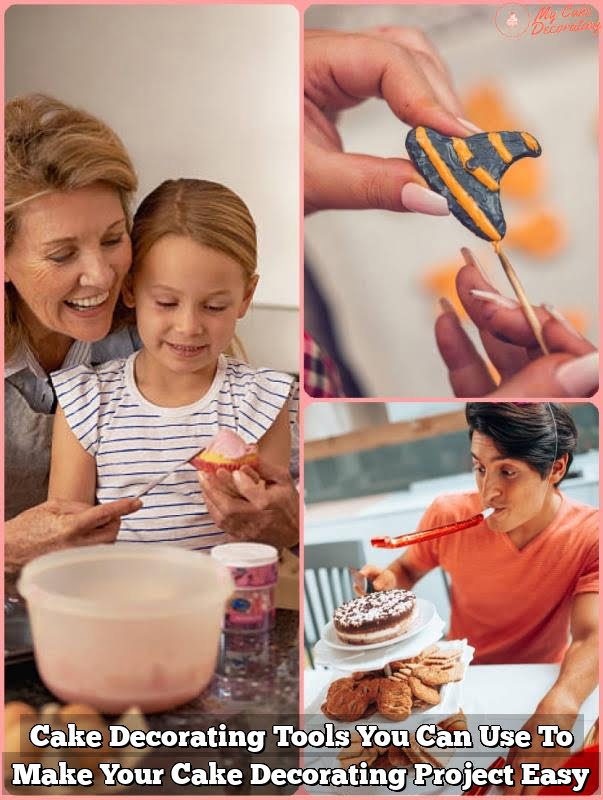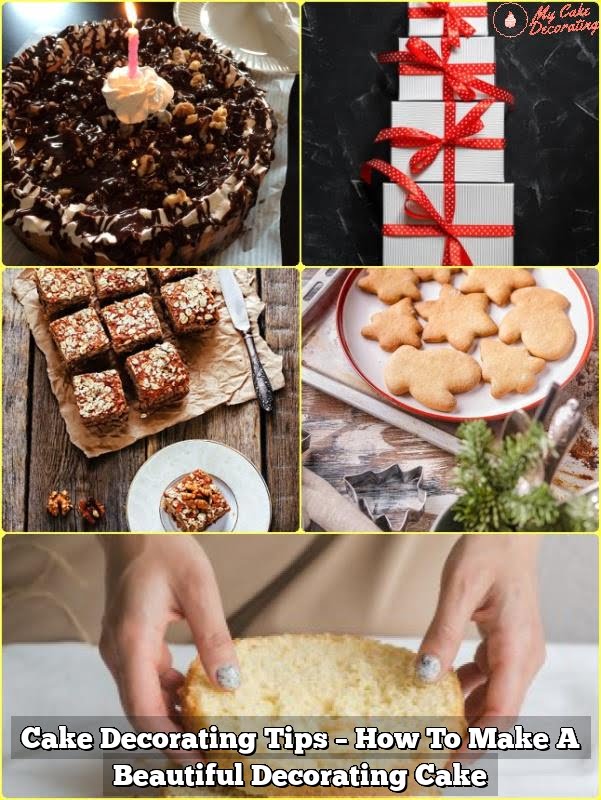Having a well-crafted cake decorating portfolio can be the key to showcasing your talent, attracting potential clients, and establishing credibility in the industry. In this article, we will guide you on how to make a cake decorating portfolio that effectively highlights your skills and creativity. Whether you are a professional baker looking to expand your clientele or an aspiring cake decorator hoping to break into the business, having a visually appealing portfolio can set you apart from the competition.
A cake decorating portfolio serves as a visual resume, allowing potential clients to see examples of your work before making a decision to hire you for their special occasion. It also provides a platform for you to showcase your unique style, range of skills, and creativity in designing cakes.
By curating a collection of your best creations, you can demonstrate your expertise in various techniques, flavor combinations, and design aesthetics. Your portfolio can speak volumes about your professionalism and attention to detail, helping you attract the right audience for your services.
In the following sections, we will delve into specific steps on setting goals for your portfolio, choosing the best work to showcase, capturing high-quality images of your cakes for visual impact, designing an appealing layout, creating compelling descriptions for each creation, incorporating your personal touch and style, utilizing online platforms for maximum exposure, and maintaining an updated portfolio to continuously impress potential clients.
A well-thought-out cake decorating portfolio is not just a collection of photographs but a powerful marketing tool that reflects your passion for baking and dedication to delivering exquisite creations.
Setting Goals
Identifying Your Objectives
Before diving into creating your cake decorating portfolio, it is essential to first identify your objectives. Ask yourself, what do you hope to achieve with this portfolio? Are you looking to attract potential clients for your cake decorating business? Or are you aiming to showcase your skills for potential job opportunities in the baking industry? By setting clear goals, you can tailor your portfolio to serve its intended purpose effectively.
Understanding Your Audience
Another crucial aspect of setting goals for your cake decorating portfolio is understanding your audience. Consider who will be viewing your portfolio – will it be brides-to-be looking for a wedding cake designer or bakery owners seeking a talented decorator? Tailoring your portfolio to resonate with your specific audience will help increase its impact and relevance. Take into account their preferences, needs, and expectations when curating the content and design of your portfolio.
Defining Your Unique Selling Points
As you determine the purpose and audience of your cake decorating portfolio, it is important to highlight your unique selling points. What sets you apart from other cake decorators? Whether it’s a signature style, special techniques, or innovative flavor combinations, showcasing what makes you unique will help make a lasting impression on those viewing your portfolio. Use this opportunity to differentiate yourself and communicate why clients or employers should choose you for their baking needs.
Choosing Your Best Work
Building a cake decorating portfolio is an essential step for showcasing your skills and attracting potential clients. Selecting the right cakes to include in your portfolio is crucial to make a lasting impression and demonstrate your range of abilities. When choosing your best work, consider selecting cakes that are not only visually stunning but also showcase a variety of techniques, flavors, and styles.
Highlight Your Expertise
When curating your cake decorating portfolio, it’s important to highlight your expertise in different areas. Include cakes that display your proficiency in intricate piping work, fondant sculpting, sugar flower arrangements, or any other unique skills you possess. By showcasing a diverse range of techniques, you can appeal to a wider audience and demonstrate your versatility as a cake decorator.
Showcase Your Creativity
In addition to showcasing technical skills, it’s essential to include cakes that reflect your creativity and originality. Choose cakes that showcase unique designs, innovative concepts, or personalized touches that set you apart from other cake decorators. Highlighting your creativity in the selection of cakes will help potential clients envision the possibilities for their own custom creations.
Consider Your Target Audience
When selecting cakes for your portfolio, consider the preferences and tastes of your target audience. If you specialize in wedding cakes, include elegant and sophisticated designs that appeal to brides-to-be. For children’s birthday parties, feature whimsical and colorful creations that capture the imagination of young ones. Tailoring your selection to cater to the specific needs of your target clientele will help you attract more suitable opportunities for cake decorating projects.
By carefully choosing your best work and presenting a diverse range of impressive cakes in your portfolio, you can effectively showcase your skills and attract potential clients. Remember to highlight your expertise, showcase creativity, and consider your target audience when selecting which cakes to include. A well-curated portfolio will not only showcase your abilities as a cake decorator but also leave a lasting impression on those who view it.
Photography Tips
When it comes to creating a cake decorating portfolio, one of the most crucial aspects is capturing high-quality images of your cakes. A picture is worth a thousand words, and in the competitive world of cake decorating, visually stunning photos can make all the difference. Here are some photography tips to ensure that your cakes shine in your portfolio:
- Use natural light: Natural light is always best when photographing food, including cakes. Position your cakes near a window or set up a shoot outdoors to take advantage of soft, diffused light.
- Choose the right background: Opt for a clean and simple background that won’t distract from the main subject – your beautiful cake. A plain white backdrop or a wood surface can work well for showcasing your creations.
- Focus on details: Make sure to capture close-up shots of intricate details, textures, and decorations on your cakes. These shots can help potential clients appreciate the artistry and skill that goes into your work.
In addition to these tips, investing in good quality camera equipment or hiring a professional photographer can also elevate the overall look of your cake decorating portfolio. Remember, the goal is to make your cakes look as delicious and appealing as they taste, so take the time to master the art of food photography for maximum impact.
- Experiment with different angles: Don’t be afraid to get creative with your shots. Try shooting from various angles – overhead, side-on, or even at eye level – to showcase different perspectives of your cakes.
- Edit photos carefully: After taking photos, use editing tools like Photoshop or Lightroom to enhance colors, adjust lighting, and sharpen details. However, be careful not to over-edit and maintain a natural look.
- Showcase scale: Include photos that show the scale of your cakes by placing them next to common objects like utensils or fruits. This can help potential clients visualize the size of your creations.
By following these photography tips and putting effort into capturing stunning images of your cakes, you can effectively convey your skills and creativity through visuals in your cake decorating portfolio. Remember that first impressions matter, so make sure that every photo truly showcases the artistry and passion you put into each creation.
Designing Layout
Creating a visually appealing and organized layout for your cake decorating portfolio is essential in showcasing your skills and attracting potential clients. A well-designed portfolio can make a significant impact on how your work is perceived, so it’s crucial to pay attention to the layout and presentation of your cakes. Here are some tips on how to design a compelling portfolio layout:
- Choose a cohesive theme or color scheme that reflects your style and personality.
- Consider using high-quality images of your cakes as the focal point of each page.
- Organize your cakes in a logical order, such as by category (e.g. wedding cakes, birthday cakes) or by complexity.
In addition to the overall design of the portfolio, it’s important to think about the user experience. Make sure that the navigation is clear and intuitive, allowing viewers to easily explore your work without feeling overwhelmed. Here are some more tips for creating an organized portfolio layout:
- Include a table of contents or navigation menu to help users find specific cakes or categories quickly.
- Use consistent fonts and typography throughout the portfolio for a polished look.
- Consider incorporating white space to give each cake room to shine and prevent overcrowding on the page.
By following these design principles and paying attention to the layout of your cake decorating portfolio, you can create a visually appealing showcase of your work that leaves a lasting impression on clients and helps you stand out in a competitive market. Remember that first impressions matter, so take the time to craft a portfolio that effectively highlights your skills as a cake decorator.
Writing Descriptions
When it comes to creating a cake decorating portfolio, writing descriptions for each cake is essential to provide viewers with a deeper understanding of your work. These descriptions should not only include details on the flavors used but also the techniques implemented in creating the cake and the inspiration behind it. By providing this context, you can give potential clients or employers insight into your creative process and demonstrate your skills as a cake decorator.
One tip for crafting compelling descriptions is to be specific and detailed. Describe the flavor profile of the cake, such as whether it’s a classic vanilla sponge with buttercream frosting or a decadent chocolate ganache-filled creation. Additionally, explain the techniques you employed, such as intricate piping work, fondant sculpting, or hand-painted details. Including these specific details will showcase your expertise and attention to detail in cake decorating.
Furthermore, don’t forget to share the inspiration behind each cake in your portfolio. Whether it was inspired by nature, art, a special occasion, or even a client’s request, revealing the story behind the design adds depth to your work.
This personal touch can resonate with viewers and make your portfolio more engaging and memorable. Overall, writing engaging descriptions is crucial in showcasing not just what your cakes look like but also telling the story of how they came to be.
| Tips for Writing Descriptions | Details |
|---|---|
| Be Specific and Detailed | Describe flavors and techniques used |
| Share Inspiration | Explain the story behind each cake design |
Adding Personal Touch
When creating a cake decorating portfolio, one of the key elements to consider is how to incorporate your own unique style and personality into the presentation. This personal touch is what sets you apart from other cake decorators and allows potential clients to get a sense of who you are as a designer.
One way to showcase your style is by including cakes that reflect your individual aesthetic preferences, whether it’s through color choices, design motifs, or specific techniques that you excel in.
Another aspect to consider when adding your personal touch to the portfolio is to highlight any special skills or signature styles that make your cakes stand out. Maybe you have a knack for intricate piping work, or perhaps you’re known for creating stunning sugar flowers.
By emphasizing these strengths in your portfolio, you can attract clients who appreciate those particular aspects of your work. Including a variety of cakes that showcase different facets of your talent can also demonstrate the versatility and range of your skills as a cake decorator.
In addition to showcasing your technical abilities, don’t forget to infuse some personality into the descriptions accompanying each cake in your portfolio. Share stories about what inspired each design, any challenges you faced during the creative process, or even fun anecdotes about memorable cakes you’ve made in the past.
Providing this behind-the-scenes look into your creative process not only adds depth to your portfolio but also helps potential clients connect with you on a more personal level. Ultimately, adding your unique style and personality to your cake decorating portfolio is what will make it truly memorable and reflective of your artistry as a baker and designer.
Online Presence
Creating an online presence is crucial in today’s digital age for showcasing your cake decorating portfolio. Utilizing websites or social media platforms can significantly expand your reach and attract potential clients. To start, you can create a professional website to display your work.
Make sure the website is easy to navigate, visually appealing, and includes high-quality images of your cakes. Additionally, consider adding a blog section where you can share behind-the-scenes insights, cake decorating tips, and client testimonials.
Social media platforms like Instagram and Facebook are also excellent tools for showcasing your cake decorating skills. These platforms allow you to reach a wider audience through hashtags, collaborations with influencers, and paid advertisements. When posting on social media, make sure to maintain a consistent aesthetic that reflects your unique style as a cake decorator. Engage with your followers by responding to comments and messages promptly, and consider hosting live tutorials or Q&A sessions to showcase your expertise.
An important aspect of utilizing websites or social media platforms is optimizing them for search engines (SEO). This involves using relevant keywords in your content, creating engaging captions for your posts, and regularly updating your online profiles. By implementing SEO strategies, you can increase the visibility of your cake decorating portfolio online and attract more traffic to your website or social media pages.
| Aspect | Action |
|---|---|
| Create Professional Website | Display work with high-quality images |
| Social Media Platforms | Engage with followers through live tutorials or Q&A sessions |
| SEO Optimization | Use relevant keywords and update online profiles regularly |
Updating and Maintaining
In conclusion, creating and maintaining a cake decorating portfolio is essential for showcasing your skills, creativity, and style to potential clients or employers. By following the steps outlined in this guide on how to make a cake decorating portfolio, you can effectively highlight your best work and stand out in a competitive industry.
One of the key aspects emphasized throughout this process is the importance of updating your portfolio regularly. This ensures that your most recent and impressive creations are showcased, reflecting your growth and improvement as a cake decorator. By consistently adding new projects, you demonstrate your dedication to evolving as an artist and staying relevant in the ever-changing world of cake design.
Additionally, it is crucial to seek feedback from peers, mentors, or even clients to continuously improve your portfolio. Constructive criticism can help you identify weaknesses or areas for growth, allowing you to refine your portfolio and tailor it to better appeal to your target audience. With a commitment to ongoing improvement and innovation, your cake decorating portfolio will not only showcase your talent but also serve as a powerful tool for attracting opportunities in the industry.
Frequently Asked Questions
How Do I Make a Cake Portfolio?
To create a cake portfolio, start by compiling high-quality photos of your cakes. Include a variety of designs, flavors, and styles to showcase your skills. Organize the photos neatly with relevant details like ingredients and techniques used.
What Should a Baking Portfolio Look Like?
A baking portfolio should visually represent your unique style and experience as a baker. Include clear, high-resolution images of your best work, highlighting different types of baked goods you specialize in. Incorporate descriptions that provide insight into your creative process and inspiration.
What Is Cake Portfolio?
A cake portfolio serves as a visual collection of your best cake creations as a baker or pastry chef. It showcases your skills, creativity, and expertise in designing and executing unique and delicious cake recipes for various occasions like weddings, birthdays, or special events. This portfolio is essential for attracting potential clients and showcasing your talent in creating stunning cakes.

Welcome to my blog about home and family. This blog is a place where I will share my thoughts, ideas, and experiences related to these important topics. I am a stay-at-home mom with two young children. I hope you enjoy reading it! and may find some helpful tips and ideas that will make your home and family life even better!





